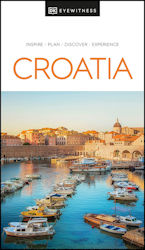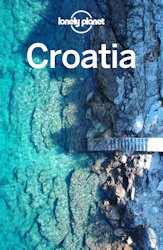Croatia is a country located in southeastern Europe, known for its stunning natural beauty, rich cultural heritage, and long history. With a population of approximately 4.1 million people, it is one of the smaller countries in Europe.
One of the most notable features of Croatia is its stunning natural beauty. The country is home to many breathtaking landscapes, including the Adriatic coastline, the Plitvice Lakes National Park, and the islands of the Adriatic Sea. These landscapes draw millions of visitors every year, who come to enjoy the crystal-clear waters, unspoiled beaches, and towering cliffs.
Croatia is also known for its rich cultural heritage, which dates back thousands of years. The country has a long and complex history, which is reflected in its many cultural monuments, including ancient ruins, medieval castles, and historic churches. The country is also home to a vibrant cultural scene, with numerous festivals and events throughout the year, showcasing the country’s music, dance, and traditional crafts.
Another notable aspect of Croatia is its long history. The country has been inhabited for thousands of years and has been shaped by a variety of cultures, including the Roman Empire, the Ottoman Empire, and the Austro-Hungarian Empire. Today, Croatia is an independent nation, with a strong economy and a well-developed infrastructure.
However, despite its many attractions, Croatia is not without its challenges. The country has faced economic difficulties in recent years, and its infrastructure and tourism industry has struggled to keep up with the growing demand. Additionally, the country is still recovering from the conflicts of the 1990s, and many parts of the country continue to struggle with poverty, corruption, and political instability.
In conclusion, Croatia is a beautiful and fascinating country, with a rich cultural heritage, stunning natural landscapes, and a long history. While it faces challenges, it remains a popular destination for tourists and travellers, who come to experience its beauty and history for themselves.
Best Time to Visit Croatia
The best time to visit Croatia depends on personal preferences and interests.
If you enjoy warm weather and spending time on the beach, then the summer months of June to August are the best time to visit. During this time, the weather is warm and sunny, with temperatures averaging around 25°C (77°F). This is also the peak tourist season when the beaches are crowded and many festivals and events take place.
If you prefer milder temperatures and fewer crowds, then the spring and autumn months of April to May and September to October are the best time to visit. During these months, the weather is cooler, with temperatures averaging around 15°C (59°F), and there are fewer tourists, making it a great time to explore the country’s cultural landmarks and natural landscapes.
Grab a Croatia Travel Guide
The winter months of November to February are also a good time to visit, particularly if you enjoy winter sports or are interested in exploring the country’s ski resorts. During this time, the weather is cold, with temperatures averaging around 5°C (41°F), but the snow-capped mountains and quiet towns make for a peaceful and serene atmosphere.
In short, the best time to visit Croatia depends on what you want to experience, but with its stunning natural beauty, rich cultural heritage, and diverse landscapes, the country can be enjoyed year-round.
Average Temperature in Croatia
The average temperature in Croatia varies depending on the time of year and location within the country.
In general, Croatia has a Mediterranean climate, with warm summers and mild winters. During the summer months of June to August, the average temperature along the coast is around 25°C (77°F). During the winter months of December to February, the average temperature is around 10°C (50°F).
In the coastal cities, such as Dubrovnik and Split, temperatures are generally warmer, with average summer temperatures around 30°C (86°F) and average winter temperatures around 15°C (59°F).
Inland areas, such as Zagreb, have a slightly cooler climate, with average summer temperatures around 20°C (68°F) and average winter temperatures around 5°C (41°F).
It is important to note that temperatures can vary greatly depending on the specific location and the time of year and that temperatures can also change rapidly, so it is always a good idea to check the local weather forecast before visiting.
Credits
Photo: Walls of Dubrovnik, Dubrovnik west harbour, Croatia. Photo by: Matthias Mullie on Unsplash







